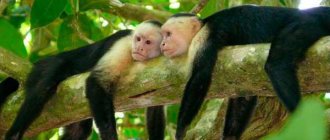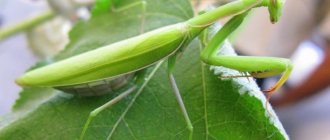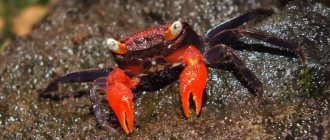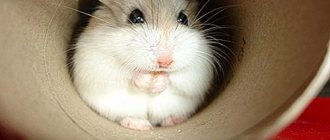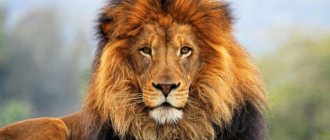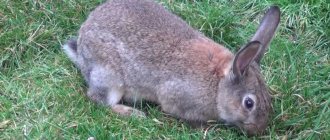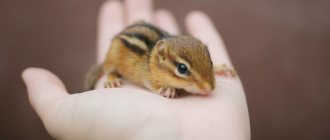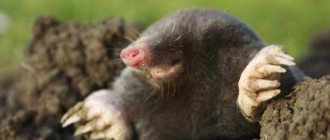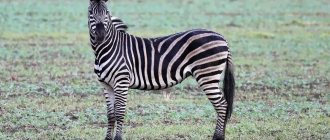- Wild animals
- >>
- Mammals
European explorers who visited the forests of the New World in the 16th century noticed the similarity of the tufts of brown hair and peculiar sideburns on the heads of local monkeys to Capuchin monks in brown robes with large hoods. That is why they gave them the name - Capuchin .
Victorian organ grinders had capuchin monkeys who danced and collected coins. Nowadays, these animals with cute faces and adorable antics appear in all sorts of shows and films such as Pirates of the Caribbean. But the most famous capuchin is Marcel, Ross's pet monkey from the TV series Friends.
Origin of the species and description
Photo: Capuchin
There are four species of New World monkeys: Cebidae, Aotidae, Pitheciidae and Atelidae. They are all slightly different from Old World primates in many ways, but the most striking difference is the nose. This feature is most often used to differentiate between two groups. The scientific name for New World monkeys, Platyrrhini, means “flat nose.” Their noses are indeed flatter, with nostrils directed to the sides, in contrast to the narrow noses of Old World monkeys.
Most American monkeys have long and prehensile tails. These are small-sized animals, arboreal species - they live in trees, and nocturnal species - are active at night. Unlike most Old World monkeys, many American monkeys form monogamous pairs and provide parental care to the young generation.
Video: Capuchin
The scientific name of the capuchin genus in Latin is Cebus. It comes from the Greek word kêbos, meaning long-tailed monkey. This is a genus that unites about thirty subspecies, grouped into four species. It belongs to the family Cebidae (grass-tailed animals), which includes two genera - samira and capuchin and is an arboreal species.
The species level taxonomy of the genus itself remains highly controversial, with alternative research methods suggesting a new classification.
In 2011, Jessica Lynch Alfaro proposed placing the robust capuchins (formerly the C. apella group) in a separate genus, Sapajus. Previously, they were part of the genus of graceful capuchins (C. capucinus). According to genetic studies conducted by Lynch Alfaro, the graceful (gracile) and robust (robust) capuchins diverged in their development approximately 6.2 million years ago.
The divergence was apparently caused by the formation of the Amazon River, which separated the monkeys north of the river, who evolved into graceful capuchins, from the primates in the Atlantic Forest south of the river, which evolved into robust capuchins.
Tarsier monkeys
Tarsiers are a species of small monkeys . They are common in southeast Asia. Primates of the genus have short forepaws, and the heel region on all limbs is elongated. In addition, the tarsier's brain is devoid of convolutions. In other monkeys they are developed.
Sirichta
Lives in the Philippines, is the smallest of the monkeys. The length of the animal does not exceed 16 centimeters. The primate weighs 160 grams. With these sizes, the Philippine tarsier has huge eyes. They are round, convex, yellow-green and glow in the dark.
Philippine tarsiers are brown or grayish. The fur of the animals is soft, like silk. Tarsiers take care of their fur coat by combing it with the claws of their second and third toes. Other claws are deprived.
Bankan tarsier
Lives in the south of the island of Sumatra. The bank tarsier is also found in Borneo, in the rain forests of Indonesia. The animal also has large and round eyes. Their irises are brownish. The diameter of each eye is 1.6 centimeters. If you weigh the visual organs of a Bankan tarsier, their mass will exceed the weight of the monkey's brain. The Bankan tarsier has larger and more rounded ears than the Philippine tarsier. They are hairless. The rest of the body is covered with golden brown hairs.
Tarsier ghost
Included in the rare species of monkeys , lives on the islands of Greater Sangihi and Sulawesi. In addition to the ears, the primate has a bare tail. It is covered with scales, like a rat's. There is a woolen brush at the end of the tail.
Like other tarsiers, the ghost acquired long and thin fingers. With them the primate clasps the branches of trees, where it spends most of its life. Among the foliage, monkeys look for insects and lizards. Some tarsiers even attack birds.
Appearance and features
Photo: Capuchin animal
Agile and slender capuchin monkeys weigh only 1.36 - 4.9 kg. Fur varies from species to species, but primates in this group are most commonly seen with cream or light brown coloring around the face, neck, and shoulders (their exact color and pattern varies by species). The rest of the body is dark brown and even black.
The hair on the capuchin's back is shorter and darker than on other parts of the body. This cute monkey's face ranges from white to pink. The length of the tail corresponds to the length of the entire body. It is covered with hair and is partially able to twine around plant branches. These primates are round-headed, elastic and tightly built. The body reaches 30–55 cm in length.
Interesting fact! Capuchin monkeys are so named because they resemble miniature Spanish Capuchin monks with their white faces and dark brown robes and hoods on their heads.
Capuchin monkeys are few in number compared to other species. They live in the wild from 10 to 25 years, although in captivity they can live up to 45 years. Their long, prehensile tail and thumbs help them live high in the branches of the rainforest. The tail acts as a fifth appendage - grabbing onto branches and helping balance as they move through the trees. Their thumbs help them with many daily tasks, from finding food to grooming.
The dominant male primate is the leader of the group. He must defend his territory and group members from predators and capuchin monkeys from other groups. On the other hand, the leader mates and always eats first.
Is it possible to domesticate a monkey?
Next, let's talk about whether a wild primate can become a small pet monkey, or whether it will forever remain a wild animal that has no place in your home. Let's look at the pros and cons.
Capuchin behind a branch
Everyone is in favor
The primate is a curiosity, so such an animal will surprise not only your children, but also yourself. It is quite smart and intelligent, so you will definitely never get bored with it. When keeping several individuals in a large enclosure, you will be able to watch how the animals communicate, care for each other, share food, or divide the territory. This is a wonderful experience and an opportunity to see how the choice of leader occurs, how animals look after each other and maintain balance within their own society.
Of course, if you buy only one monkey, it will be bored, so it will not refuse your company. However, it will have to be maintained separately so that there is no conflict of interest, as well as a “war” for territory.
Everyone is against
Capuchin crybaby with baby
At the same time, it is worth understanding that these are not dogs or cats, who have lived with people for hundreds of years and obey them. Monkeys, no matter how cute and small they are, are strong and quite formidable creatures that can tear not only clothes, but also human flesh. It is enough to know that an adult capuchin is 5-10 times stronger than the average person, and if you add to this the fact that the monkey knows how to use its sharp teeth, then you can forget about the cute little animal.
Another problem is the usual hierarchy. Primates in the wild constantly compete for primacy, and accordingly, the animal will never submit to you, since you position yourself as the leader. And if you let the capuchin understand that he is in charge, then any reproach or punishment will be followed by aggression and attempts to restore the “position.” The last problem is health.
Capuchin at the zoo
Life at home does not even remotely resemble natural conditions, so the animal begins to suffer from nervous disorders, as well as diseases associated with the musculoskeletal system.
As a result, you can end up with a creature that will attack you at any moment, because something is simply “stuck” in its head. If the capuchin suffers from diseases associated with bones or tendons, then it simply will not be able to move normally. Summarizing the above, we can conclude that the animal can only be kept in a separate room, which will be close to the conditions of the wild. In all other cases, you will encounter a lot of problems, since aggression is a normal reaction for these animals, so it is impossible to turn a capuchin into a tame animal using humane methods.
At Stanford University (USA), there lives a gorilla named Koko, whose mental abilities are at the level of the average person. The animal not only understands sign language, but also knows about 2000 words. At the same time, the primate understands the meaning of words, due to which he is able to talk about his feelings and even joke.
Brown capuchin on a branch
Where does the capuchin live?
Photo: Capuchin monkey
Capuchins are found in a wide variety of habitats, from rainforests to lowlands, and from wet to dry climates. They are native to many countries and islands in South America and the Caribbean.
Their habitat includes:
- Honduras. Over a wide area in a tropical area;
- Brazil. In the rainforests on both sides of the Amazon;
- Peru. In the eastern part of the country;
- Paraguay. In the tropical part of the country;
- Colombia. In most of the territory;
- Costa Rica. On the tropical coast;
- Panama. Along the coast and in the central rainforests;
- Argentina. Found in the eastern and western parts of the country.
In Central America and the Caribbean coast they are located in moist lowland forests, and on the Pacific coast their habitat is deciduous dry forest. Capuchins are known to quickly adapt to human invasion and develop much better than most primate species under the same conditions. But they are most comfortable in areas with a dense canopy of foliage on the trees, which provides them with shelter, food, a safe way to travel and safe sleeping places.
On average, individual monkeys will travel up to 3.5 km per day within their territory. Typically, the range of one clan occupies an area of 50-100 hectares of land. Capuchin monkeys often move from tree to tree without even touching the ground.
Choosing an animal: what to look for
The most common are brown capuchins, which can be purchased both from experienced breeders and in private zoos. It is worth understanding that the animal must meet certain standards, otherwise you will acquire a sick primate. A healthy animal must have intact skin, and the coat must have a good aesthetic appearance. Bald spots or torn tufts are not allowed. It is also worth paying attention to the animal’s mobility and energy.
A healthy capuchin does not sit in one place, but tries to constantly move. The animal must want to eat, so if you offer it a treat, but the primate refuses it, then there are health problems. Separately, it is worth mentioning age. You should buy capuchins that have reached 5 months of age, since it is from this moment that animals can eat regular food, and not mother’s milk. This is very important, since you simply cannot replace the mother's milk, which is why the baby will die.
Brown capuchin close up
Do not forget that an experienced breeder who loves his pets will be happy to tell you what a primate loves, how to care for it, how to communicate correctly and what not to do. If a breeder is trying to sell a primate as quickly as possible, it means he simply doesn’t care about these creatures, which, as practice shows, negatively affects the health and emotional state of the monkeys. Many people are interested in how much a pet capuchin monkey costs.
The cost of a healthy young primate starts at $2.5 thousand. It’s worth clarifying right away that the high purchase price indicates not only the quality, but also that further costs for care and feeding will be considerable, so you shouldn’t spend a large amount in the hope that that the capuchin will eat from your table.
Pair of capuchins
What does a capuchin eat?
Photo: Capuchin
Capuchins cooperate within their group in collecting and distributing food. They consume a diverse range of food types, which is greater than that of other species of the family Cebidae. They are omnivores and consume various plant parts such as leaves, flowers, fruits, seeds, nuts, tree bark, sugar cane, bulbs, buds and exudates, as well as insects, spiders, bird eggs and even small vertebrates such as lizards and small rodents.
Capuchins have also been observed to be particularly good at catching frogs. They are characterized as innovative and extreme foodies due to their ability to derive sustenance from a wide range of unlikely foods that can ensure their survival in habitats with extremely limited nutritional resources. Capuchins that live near water will also eat crabs and shellfish by breaking their shells.
Capuchin monkeys are very intelligent animals that use various types of tools (sticks, branches, stones) to open shells, nuts, hard seeds and mollusk shells.
Some species are known to eat up to 95 different plant species. They use rocks to crack open nuts, seeds, shellfish and other prey. Like many other primate species, capuchins help disperse plant and fruit seeds throughout their habitat, helping to increase biodiversity and plant regeneration.
Capuchins constantly need water and need water. They take liquid from almost any source. They drink water from hollows in trees, streams and other accessible bodies of water and sources. During the dry season, they have to travel long distances every day to the place where the water seeps in.
About maintaining primate health
The health of a monkey is influenced not only by genetics, but also by many other factors: nutrition, ecology, care, the presence or absence of communication. Although primates are wild animals, if they find themselves in unfavorable conditions, they can get sick even more often than people, so they also need medical care.
Capuchin in leaves
Immediately after purchasing a pet, you should find a good veterinarian who has worked with monkeys. He must have experience and specialized education in order to promptly diagnose deviations from the norm. It is important to understand that the presence of ideal conditions and a varied menu does not protect 100% from all diseases, so sooner or later you will still have to contact a veterinarian, and it is better that he knows how to diagnose and treat certain diseases of primates.
It is also worth mentioning that you can infect your pet with a common cold or flu. No matter how strange it may sound, a similar structure and body temperature allow bacteria and viruses to infect the creature. At the same time, it is worth understanding that if the monkey has a cold or catches a virus, then the “infection” can spread to you, which is why any contact with a sick creature should be limited. Capuchins should be tested annually for tuberculosis. Now you know what a capuchin primate is, whether it is wise to keep it at home, and what conditions need to be created for the animal to feel good.
Remember that this primate is a wild animal, so you will have to spend a lot of time to at least partially tame it. Do not forget that a monkey is not the best toy for children, so do not allow your child to touch or handle a capuchin to avoid injury or injury.
Video
Features of character and lifestyle
Photo: Capuchin animal
Capuchins usually live in large groups (10 - 35 members) in the forest, although they can easily adapt to areas colonized by humans. But they can be divided into smaller groups for grooming, socialization and searching for food.
Most species have a linear hierarchy, meaning that both males and females have their own order of dominance, but the alpha male of the unit is always dominant over the alpha female. He has basic rights to marry women in his group. However, white-headed capuchin groups are led by both an alpha male and an alpha female. Each group covers a large area, as clan members must search for the best areas for food.
Fun fact! These primates are territorial animals, clearly marking the central area of their territory with urine and protecting it from intruders.
Stabilization of group dynamics is carried out through mutual grooming, and communication between monkeys occurs through various sounds. Capuchins can jump up to three meters, and they use their skill to get from one tree to another. Remaining hidden among forest vegetation for most of the day, capuchin monkeys sleep on the branches and only come down in search of drinking water.
With the exception of a midday nap, they spend the entire day searching for food. At night they sleep in trees, squeezing between the branches. They are undemanding in terms of their habitat and can therefore be found in a variety of areas. Capuchins have complex social structures, long-term kinship relationships in both sexes, and a rich behavioral repertoire, making them an intriguing subject for scientific observation.
Orangutans
Always massive. Male orangutans are larger than females, with hooked fingers, fatty growths on the cheeks, and a small guttural pouch, like gibbons.
Sumatran orangutan
Belongs to the red monkeys, has a fiery coat color. Representatives of the species are found on the islands of Sumatra and Kalimantan. The Sumatran orangutan is a member of the great ape species . In the language of the inhabitants of the island of Sumatra, the primate’s name means “forest man.” Therefore, it is incorrect to write "orangutaeng". The letter "b" at the end changes the meaning of the word. In the Sumatran language, this is already a “debtor”, and not a forest person.
Bornean orangutan
It can weigh up to 180 kilos with a maximum height of 140 centimeters. Monkeys of the species are like sumo wrestlers, covered with fat. The Bornean orangutan also owes its large weight to its short legs against the backdrop of its large body. The monkey's lower limbs, by the way, are crooked. The arms of the Bornean orangutan, as well as others, hang below the knees. But the fat cheeks of representatives of the species are especially fleshy, significantly expanding the face.
Kalimantan orangutan
It is endemic to Kalimantan. The monkey is slightly taller than the Bornean orangutan, but weighs 2 times less. The fur of primates is brownish-red. Bornean individuals have a distinctly fiery fur coat. Among monkeys, orangutans of Kalimantan are long-lived. The age of some ends in the 7th decade.
All orangutans have a concave skull at the front. The general outlines of the head are elongated. All orangutans also have a powerful lower jaw and large teeth. The chewing surface is clearly raised, as if wrinkled.
Social structure and reproduction
Photo: Capuchin baby
Capuchins breed at any time of the year; they do not have a special mating season. Although in Central America, births occur more often during the dry season and at the beginning of the rainy season (December to April). Females direct most of their energy and mating behavior towards the alpha male. However, when a female reaches the end of her gestation period, she can mate with six other males in one day.
Specific targeting of an alpha male does not occur every time, as some females have been found to mate with three to four different males. When an alpha female and a lower-ranking female want to mate with an alpha male, the more dominant female gains rights to the male over the lower-ranking individual. Males have been observed not to mate with their daughters.
Males urinate on their hands and cover their bodies with urine to establish their territories and attract the attention of females.
The gestation period is about six months (160-180 days). Childbirth, as a rule, is single, but sometimes it happens that a female carries two cubs. Some women give birth at intervals of one to two years. Young females reach maturity in three to four years, males in 8 years.
The baby's body weight is about 8.5% relative to the mother's weight. The young cling to the mother's chest until they grow up, then they move to her back. Young capuchins learn how to survive from more experienced adults. Adult male capuchins rarely take part in caring for their offspring. Grown-up primates leave their group after reaching sexual maturity.
Natural enemies of capuchins
Photo: Capuchin monkey
Hawks often accompany primates on their route. Capuchins, sensing a threat, try to be vigilant and hide. Large snakes and boa constrictors also try to grab the monkeys, but the primates are extremely careful. After discovering a boa constrictor or snake, group members show excitement and try to move away.
Capuchin monkeys spend most of their lives in treetops, where they can find food and hide from predators.
Among their natural enemies are:
- boa constrictors;
- jaguars;
- hawks;
- eagles;
- large falcons;
- cougars;
- snakes;
- jaguarundi;
- coyotes;
- tayra;
- crocodiles.
The Crested Capuchin's main predator is the harpy eagle, which has been observed to steal small individuals and carry them to its nest. Capuchin monkeys use a special type of warning call (a sharp whistle) to notify group members in case of danger. The sound of purring is heard when the monkeys greet each other.
Representatives of the white-fronted variety stick their fingers deep into the eye sockets of another capuchin, thus showing a friendly attitude. Although they often use parts of their ally's body to strike a common enemy with it. These behaviors are ingrained in the repertoire of resourceful primates, but they are also constantly evolving.
